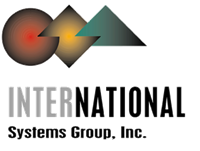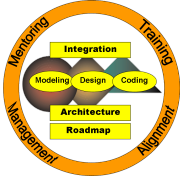- Home
- /
- Clients
- /
- Case Studies
- /
- Investment Bank Case Study
Next steps:
Events:
Conference 2014
The Connected Enterprise – Cloud, Mobile, and the Internet of Things
Rome, Italy, December 2-3, 2014
Scheduled seminars
The New Integration Manifesto: Applications, Data, Cloud, Mobile, and the Internet of Things
October 27-28, 2014
Application Development in the Age of Cloud and Mobile
December 11-12, 2014
Case Study: Asset Management System

Asset Management Division (“AMD”) of a major investment bank.
The main objective of this engagement was to assist AMD with the definition and implementation of a layered services model that followed best practices for a Service Oriented Architecture (SOA). This architecture provided AMD with a consistent technical framework and a consistent process for software development and integration.
The following improvements were achieved:
- Reduction of functional redundancy -- Several of the current home grown and packaged applications overlapped in their functionality, i.e. redundant functionality existed in multiple applications. A good example for this was order generation logic, which existed in Phoenix and Longview applications, and order management logic (i.e. LongView, McGregor). Under the Service Oriented Architecture business logic was implemented as well defined services, enabling access from any application in a standard way, such that the business logic existed only in one place.
- Reuse of services -- Newly developed services and services that had been “extracted” from existing applications through encapsulation could be reused within any application or business process that required this particular functionality.
- Business process management -- Once business logic became available as standardized services, it became feasible to utilize GUI tools to visually implement business processes like routing a trade request from London to NYC, or sharing a trade with multiple partner firms, and later be able to quickly change this process.
- Agility -- IT was enabled to support new business relationships (e.g. new portfolio management firms, hedge funds, etc.), since the architecture made it possible to quickly react to new business requirements that could not be handled through existing workflows, but rather necessitated assembling a new process on top of the application and infrastructure services (e.g. an application service that manages orders, an infrastructure service that handles data persistence or logging and so on).





